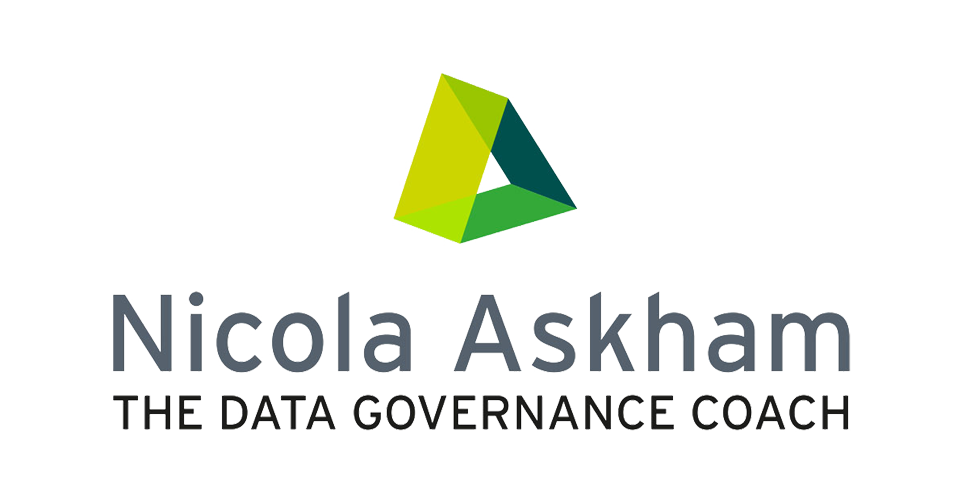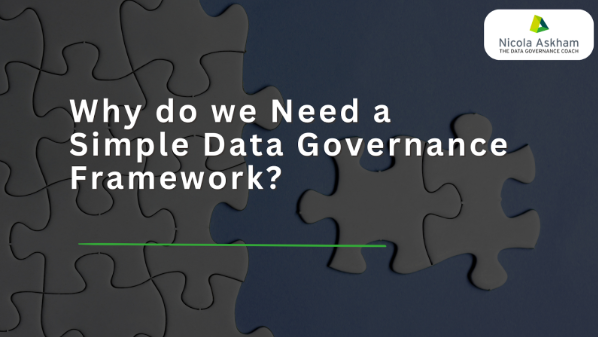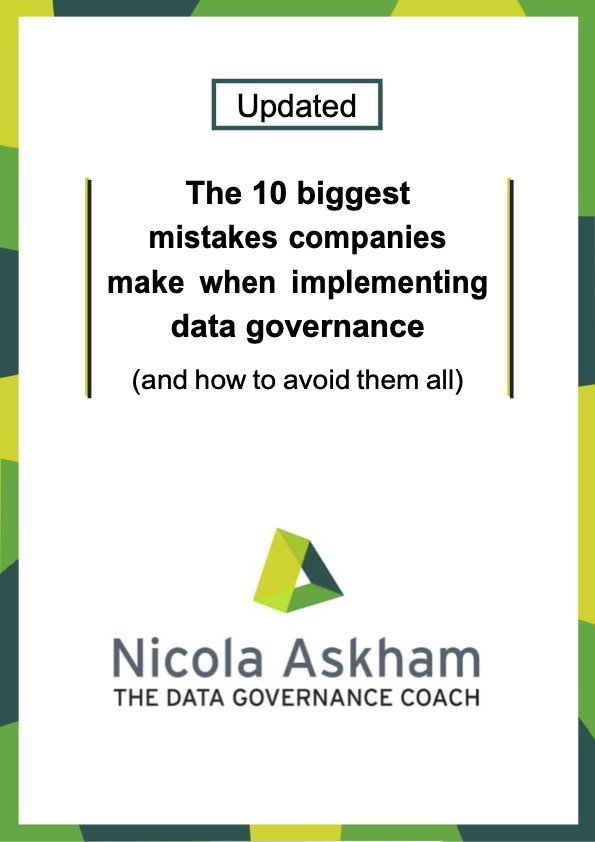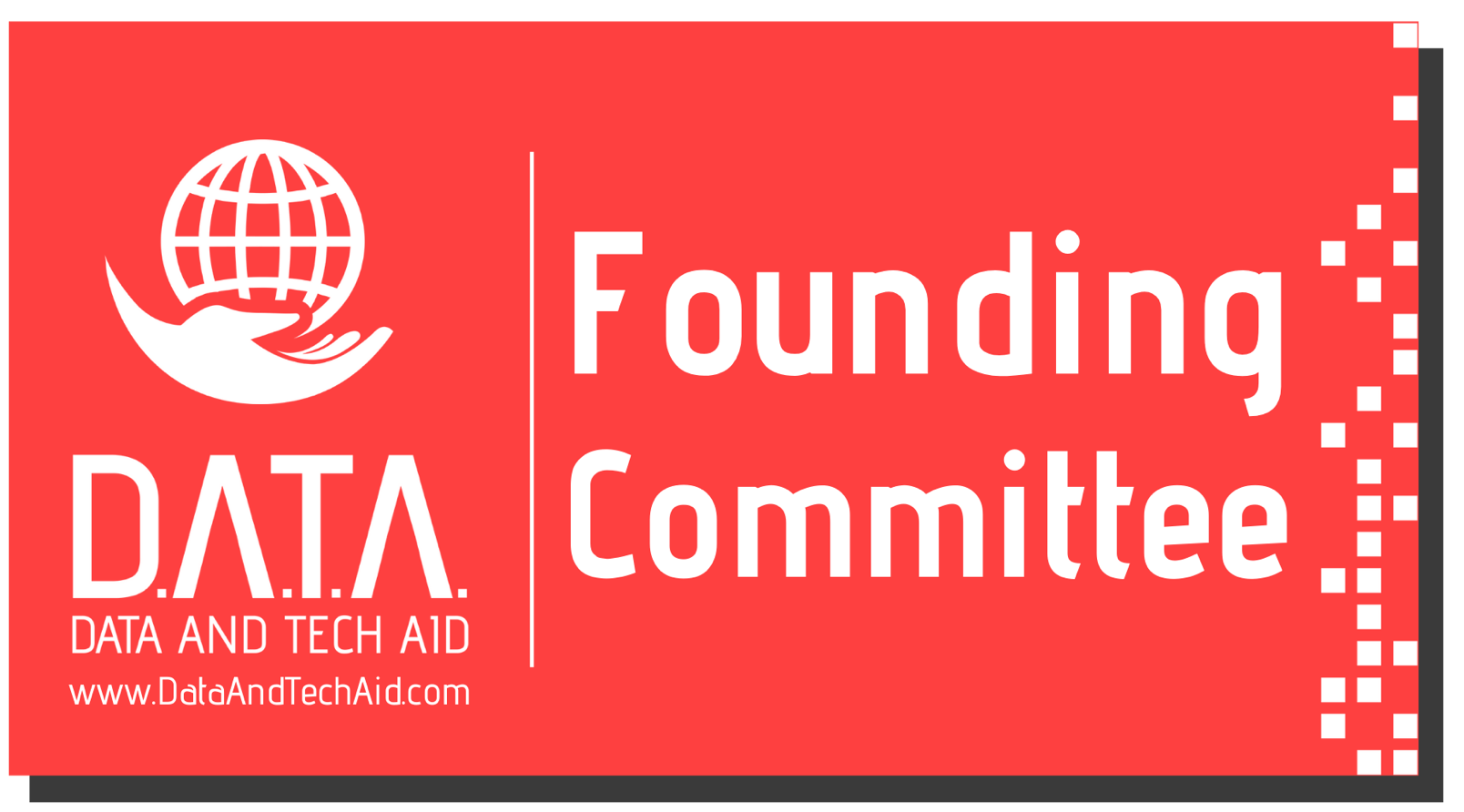Why do we Need a Simple Data Governance Framework?
/Data Governance can be a complex field to work in and on a regular basis, it seems like there is always some sort of newbarrier to overcome, whether you’re a newcomer to the field or a veteran. Yet one thing I bet most Data Governance practitioners will have in common is the understanding that when it comes to being successful with your framework, simplicity is the way forward. And I can vouch for this too.
In this blog, I want to break down why exactly simple is simply the best (Tina Turner pun intended!).
The Purpose of Data Governance
At its core, Data Governance is about enabling people in your organisation to use data more effectively. It helps them understand the data they have, assess its quality, and take the necessary actions to improve that quality if needed. The aim is to make sure data is working for the business - not the other way around.
But if we design a framework that is overly complicated, we run the risk of turning people off from using it altogether. Instead of engaging with Data Governance, they may see it as a burden that gets in the way of their daily work. And that’s the exact opposite of what we’re trying to achieve.
Complexity Creates Barriers
Let’s face it,no one wants to deal with unnecessary complexity, especially when they’re already juggling a hundred other tasks. If your Data Governance framework feels like a set of obstacles that makes accessing or using data more difficult, people will naturally resist it. Even if you’re telling them that it will make their work easier in the future, it’s hard to convince them if the framework feels like just another layer of complication.
We’ve all been there, haven’t we? We’ve encountered processes that are so complicated they just seem to make life harder rather than easier. When that happens, people tend to disengage, and they’ll stick to what they know instead of adopting new practices - even if those new practices would benefit them in the long run.
Think About it in Terms of Watching TV
To explain this further, I like to use an analogy that most people can relate to - watching television.
Years ago, when I was a child, things were simple. You had terrestrial TV with a few channels and after dinner, my family would gather around, check the Radio Times, and decide what to watch from a limited selection. We all watched the same show together and it was easy.
Fast forward to today, and watching TV is anything but simple! You’ve got cable, satellite, streaming services like Netflix, Amazon Prime, and Disney+, and you can watch on multiple devices. The choices are endless, and sometimes it feels overwhelming.
Earlier this year, I had a rare opportunity to watch something on my own, without my husband. I thought I’d pick out a nice costume drama, but it didn’t go as planned. I spent 45 minutes scrolling through multiple platforms and still couldn’t decide what to watch. In the end, it felt so complicated that I gave up, made a cup of tea, and read a book instead.
Now, imagine that same level of frustration amplified in a work environment. If you present someone with an overly complex Data Governance framework, they’ll feel just like I did when trying to pick something to watch. They’ll give up and move on to more urgent tasks because, even if the framework could help them in the future, they can’t see past the immediate complexity.
Simplicity Is Key
So what’s the solution? Keep your Data Governance framework simple. Start with a framework that’s easy to understand and easy to adopt. The goal is to make it clear, concise, and not intimidating. If people can grasp it quickly, they’re much more likely to engage with it and see its value.
Simplicity doesn’t mean you won’t be able to build on the framework later on. You absolutely can add more detail as your organisation becomes more comfortable with it. But the starting point should always be straightforward. By doing this, you make Data Governance feel like something that helps people do their jobs better, not something that gets in the way.
At the end of the day, the reason we implement Data Governance is to deliver real value to the business. It’s about making data a more valuable asset, making it easier to access, understand, and improve the quality of that data where needed. If the framework is too complicated, people won’t see it as a tool to help them - they’ll see it as a burden.
Final Thoughts
Simplicity is more powerful than complexity in a lot of ways, and this includes Data Governance. When frameworks are simple, people are more willing to adopt them, which leads to better engagement, better data management, and ultimately better business outcomes. Remember, the goal is to help the business, not to create more work.
So, if you’re designing a Data Governance framework, always keep simplicity in mind. Start small, keep it clear, and watch as your business begins to truly see the value of good Data Governance.
If you'd like support implementing an effective Data Governance framework in your organisation, book a call with me below.









